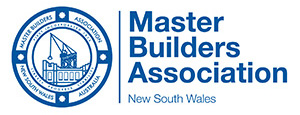Recent case dealing with the Inadequacies of Statements as dependable Evidence
04/12/2019
A recent decision of the Court of Appeal (Nagamuthu v Shanmugarajah [2019] highlights the importance of corroborative evidence in particular, where the oral testimony alone of a party is far from persuasive.
In the trial below, one party had a claim in restitution against the other arising from participation in a “seetu”, a form of financial endeavour apparently relatively common amongst Sri Lankan people, both in Australia and in Sri Lanka.
The main evidence was oral testimony from the Plaintiff and the oral testimony from Defendant.
The Plaintiff had the onus of proof of his claim. This required that the Trial Judge must find, in relation to each of the facts necessary to support the Plaintiff’s claim “an actual persuasion of its occurrence or existence before it can be found. It cannot be found as a result of a mere mechanical comparison of probabilities independently of any belief in its reality”.
However, the Trial Judge was less than impressed by the evidence of either party.
In Nagamuth’s case the Trial Judge said she was not prepared to accept the evidence of the Plaintiff as accurate, “unless it [was] corroborated by some other evidence”.
In relation to the Defendant, the Trial Judge was not prepared to find that his evidence was accurate or reliable, describing him as “one of the most evasive witnesses” she had ever heard give evidence and some of his explanations in the witness box as “extra-ordinary”.
If that was the extent of the evidence, then it may have been appropriate to dismiss the Plaintiff’s claim on the basis that he had not established the claim to the requisite satisfaction of the Trial Judge.
However, the Trial Judge relied on other evidence which she found corroborated the evidence of the Plaintiff, and sufficiently supported the Plaintiff to establish his claim.
The main issue in the appeal was whether this evidence on behalf of the Plaintiff was truly corroborative, and hence, appropriately relied upon by the Trial Judge.
The Court of Appeal ultimately agreed with the Trial Judge that the evidence relied upon by the Trial Judge was corroborative of the Plaintiff’s evidence, and dismissed the appeal. The Court of Appeal considered that the documents submitted in evidence were a number of pieces of corroborative evidence which, “when pieced together, provide powerful confirmation, support or strength for the evidence needing to be corroborated. It is a mistake simply to analyse each piece of corroborating evidence individually and independently”.
It is useful to refer to three statements of principle about the difficulty of resolving disputed issues of fact based on the uncorroborated testimony of conflicting witnesses.
In Watson v Foxman (1995) McLelland CJ in Eq said:
“[H]uman memory of what was said in a conversation is fallible for a variety of reasons, and ordinarily the degree of fallibility increases with the passage of time, particularly where disputes or litigation intervene, and the processes of memory are overlaid, often subconsciously, by perceptions of self-interest as well as conscious consideration of what should have been said or could have been said. All too often what is actually remembered is little more than an impression from which plausible details are then, again often subconsciously, constructed. All this is a matter of ordinary human experience.”
In Fox v Percy in 2003 the High Court of Australia said:
“Further, in recent years, judges have become more aware of scientific research that has cast doubt on the ability of judges (or anyone else) to tell truth from falsehood accurately on the basis of such appearances. Considerations such as these have encouraged judges, both at trial and on appeal, to limit their reliance on the appearances of witnesses and to reason to their conclusions, as far as possible, on the basis of contemporary materials, objectively established facts and the apparent logic of events. This does not eliminate the established principles about witness credibility; but it tends to reduce the occasions where those principles are seen as critical.”
The Hon Michael Kirby AC CMG in 2018 wrote an article in which he said:
“Now deference to the judicial impression of witnesses is a last consideration, after exhausting any relevant contemporaneous evidence and analysis of the inherent logic of the proved facts. Technology is coming to the aid of the law and the courts. The endless stream of emails and text messages, all phone location records and other objective testimony makes it much less usual for judges and decision-makers now to rest their conclusions on the fragile foundation of human assessment of truthfulness based on witness appearances. In my view, this is a desirable change in the appellate instruction about the processes of judicial reasoning about contested facts. Analysis of the detailed evidence and the logic of the circumstances will trump judicial impressions unless the judge has no other way to decide between the evidence of the parties.”
These cases highlight the need to search for the best and most reliable evidence possible in preparing and running a case, particularly where there is likely to be a significant factual dispute as to what was said or done.
They also highlight the sense of having an objective assessment of the plausibility of evidence and a claim.
Further ascertaining the extent of the evidence available also assists in ascertaining your prospects of success with more rigor.
Watson & Watson believe in thoroughly preparing cases for clients, so that they have the best prospects of success, and are adept at marshalling all relevant evidence to do so. Please contact Richard Watson or Shereen Da Gloria Personal Assistant if you wish to discuss a claim, and seek timely advice.
This is only a preliminary view and is not to be taken as legal advice without first contacting Watson & Watson Solicitors on 9221 6011.




